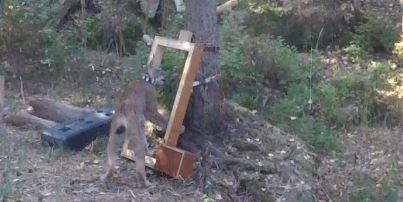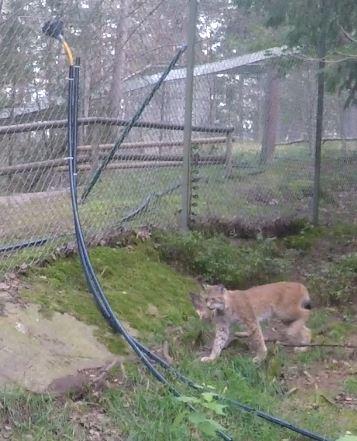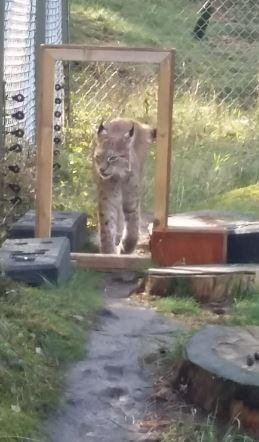Discussion
Olfactory treatment
Based on the visual observations, the lynxes interacted more often with the catnip treatment than with cinnamon, valerian and control treatments. Sniffing, rubbing, biting and licking were the most significant displayed behaviour during the catnip treatments. These treatment-direct behaviours indicated a stronger response to catnip than to cinnamon, valerian and control. This conclusion is partially supported by the HDX PIT tag antenna and BLE tag data.
The different results between the monitoring technologies and the visual observations may be explained by the different type of data. It is actually difficult to compare the data from the visual observations with those of the HDX antenna and BLE smartphones. The visual observations are a measure of the quality of the interaction, where some behaviour scored very high (rubbing and sniffing), which would not be reflected by the HDX and BLE data . Also with the HDX PIT tag and the BLE tag data are generated 24 hours a day whereas the visual observation only give a maximum of 4 hours of data a day.
Furthermore, the HDX PIT tag antenna and the BLE tag smartphones registered only the cats being close to the treatment station and not the behaviour. Some visits could have been just the lynxes passing by the scent station without displaying any behaviour directed towards the treatment. The Reconyx Hyperfire camera was placed to verify that the detections matched with some treatment directed behaviour but unfortunately, due to the extremely hot weather during the summer of 2018, the camera’s trig function did not work as expected and therefore only very few photos were obtained, showing no significant interactions with the odour treatments for any of the lynxes

Auditory treatment

The lynxes were found to spend significantly more time on behaviours directed toward the speaker playing the sounds compared to pre- and post-treatment. The mean duration of sound-directed behaviours was higher towards lynx calls, lynx growls and roe deer barks, compared to control. These results suggest that the type of sound treatments influenced the responses of the lynxes. The lynxes tended to be attracted by conspecific sounds (i.e. lynx growls and lynx calls) and prey sounds (i.e. roe deer barks) which are both ecologically relevant sounds that lynxes may encounter in their natural habitat.
The cricket treatment (presence of crickets and their sounds) was found to significantly increase approach behaviours, compared to pre- and post-treatment. This suggests that the lynxes were attracted by the sound emitted by the crickets. However, there was no clear evidence that it was the cricket sounds that made the lynxes approached, it may also have been due to the human presence when the crickets were poured into the PE plastic hose. Moreover, the cricket treatment did not have the excepted effects on the behaviour of the lynxes. They were expected to chase, catch and play with the crickets when they were falling out through the holes drilled in the tube.
Pacing
Concerning pacing, the results from the visual observations were supported by those from the HDX PIT tag antenna, which showed no differences in average time pacing between sensory treatments and control, and pacing was not reduced by the sensory treatments.
These findings suggest that pacing was not influenced by the sensory treatments.
This could be explain by some missing data with the monitoring technology due to technical issues. Since HDX PIT tag data were missing for more than half of the scent and sound treatments period, other factors such as feeding time, enclosure size or individuals in the group could have infuenced pacing.

Responsible for this page:
Director of undergraduate studies Biology
Last updated:
05/16/19
